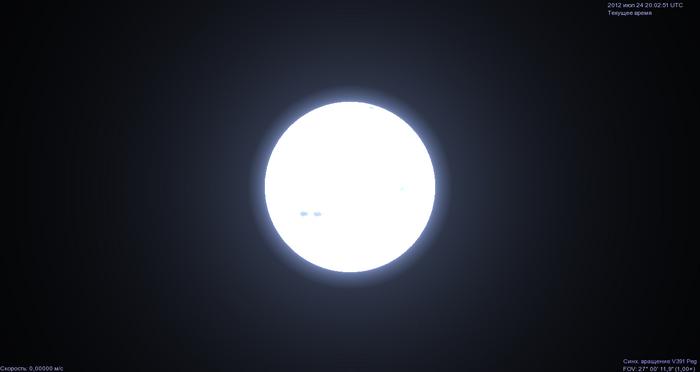When stars die, they don’t all go out in a blaze of glory. Some fade away — quietly, beautifully — leaving behind a glowing core that tells the story of what once was.
That’s a white dwarf: the final whisper of a star’s life.
What Exactly Is a White Dwarf?
A white dwarf is what remains when a medium-sized star — like our Sun — runs out of nuclear fuel.
During its lifetime, the star burns hydrogen into helium through nuclear fusion, generating energy and light. But when the fuel runs dry, gravity begins to win the cosmic tug-of-war.
The outer layers drift away into space, forming a beautiful planetary nebula, while the inner core — extremely hot and dense — collapses under its own gravity.
That leftover core is what we call a white dwarf.
It no longer produces energy through fusion. Instead, it glows with the leftover heat of its past — like an ember after a campfire has gone out.
How Dense Are They?
Imagine cramming the mass of the Sun into a sphere the size of Earth.
That’s how dense a white dwarf is.
Just one teaspoon of white dwarf material would weigh about a ton — roughly the weight of an elephant compressed into a spoon.
Why? Because gravity has crushed the atoms so tightly that electrons are forced into the smallest space possible, creating a bizarre quantum pressure called electron degeneracy pressure — the only thing preventing the star from collapsing further.
It’s the universe’s version of a “do not collapse” rule.
The Quantum Support: Electron Degeneracy
Here’s the amazing part:
White dwarfs are stable not because of fusion, but because of quantum mechanics.
According to the Pauli Exclusion Principle, no two electrons can occupy the same quantum state.
So when gravity tries to squeeze the star tighter, electrons push back — not physically, but quantum mechanically. This “pushback” creates degeneracy pressure, an invisible wall that halts total collapse.
It’s like billions of electrons saying, “We’ve got nowhere else to go.”
That’s what keeps the star intact.
The Light That Lingers
White dwarfs shine — but not because they’re still burning.
They shine because they’re still hot — often at temperatures above 100,000°C when newly formed.
Over billions of years, they slowly cool and dim, fading from white to yellow, then red, and eventually turning black — becoming a black dwarf, a dead, cold remnant.
But the universe isn’t old enough yet for any black dwarfs to exist. Every white dwarf we see today is still glowing.
So, in a way, we’re witnessing the afterglow of ancient stars.
The Fate of Our Sun
One day, our Sun will become a white dwarf too.
About 5 billion years from now, it will swell into a red giant, engulf Mercury and Venus, maybe even Earth.
Then, it will shed its outer layers into a colorful nebula — a cosmic farewell — leaving behind its white-hot core.
That will be the Sun’s quiet afterlife: small, bright, and slowly cooling for trillions of years.
The Limit: Chandrasekhar Limit
There’s a limit to how massive a white dwarf can be — about 1.4 times the mass of the Sun.
If it’s heavier than that, electron degeneracy pressure can’t hold it up anymore.
The star will collapse further, becoming either a neutron star or, if massive enough, a black hole.
This boundary is called the Chandrasekhar Limit, named after the Indian astrophysicist Subrahmanyan Chandrasekhar, who discovered it at just 19 years old.
Why White Dwarfs Matter
White dwarfs are stellar fossils — ancient archives that preserve the chemical history of the galaxy.
By studying them, astronomers can:
- Estimate the age of star clusters and our Milky Way.
- Understand the life cycles of stars.
- Even measure the expansion rate of the universe, through supernovae that originate from them (Type Ia supernovae).
They are the cosmic timekeepers — silent, glowing witnesses of billions of years of stellar evolution.
In Essence
A white dwarf is not a dying star, but a memory of one.
It’s what remains when the noise fades — pure light, held together by quantum laws.
Each white dwarf you see through a telescope is a monument to a star that once shone brightly, lived fully, and now rests quietly — proof that even in death, stars can still shine.
Summary:
- Born from medium-sized stars (like the Sun).
- Supported by electron degeneracy pressure.
- Extremely dense — a spoonful weighs a ton.
- Slowly cools over billions of years.
- Limited by the Chandrasekhar limit (1.4 solar masses).
- Serves as a record of stellar evolution.


